#Holy Monastery of Vatopedi
Text
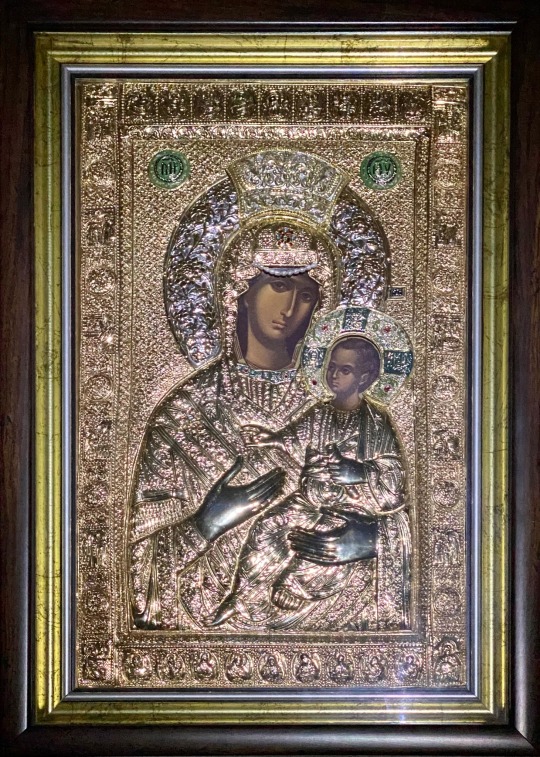
“If a person wants to get an idea about the pyramids of Egypt, he must either trust those who have been in immediate proximity to the pyramids, or he must get next to them himself. There is no third option.
In the same way, a person can get an impression of God: he must either trust those who have stood and stand in proximity to God, or he must take pains to come into such proximity himself.”
+ St. Nikolai Velimirovich
#Panagia#Panagia Vimatarissa#holy icons#iconography#Holy Mountain#Mount Athos#eastern orthodox#eastern orthodoxy#orthodox christianity#orthodoxy#greek orthodox#orthodox church#serbian orthodox#christianity#orthodox#this icon is my fave in my collection#God forgive me I never show the right reverence to the beautiful window He’s given me#Icons are windows to Heaven#Vimatarissa#Holy Monastery of Vatopedi
99 notes
·
View notes
Text

Holy and Great Thursday. The Mystical (Last) Supper. Early 14th c. Fresco in Vatopedi Monastery, Mt. Athos. [OrthoChristian.com]
17 notes
·
View notes
Photo



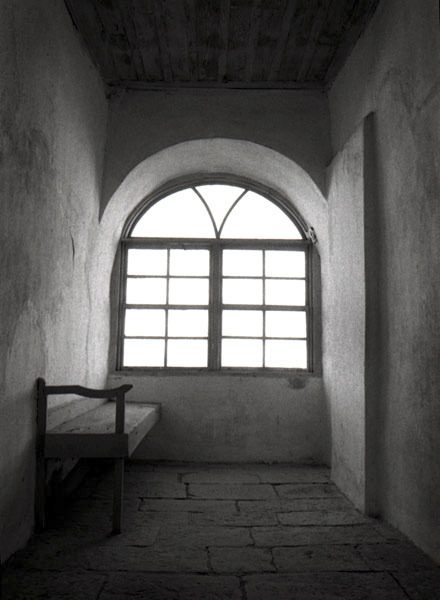
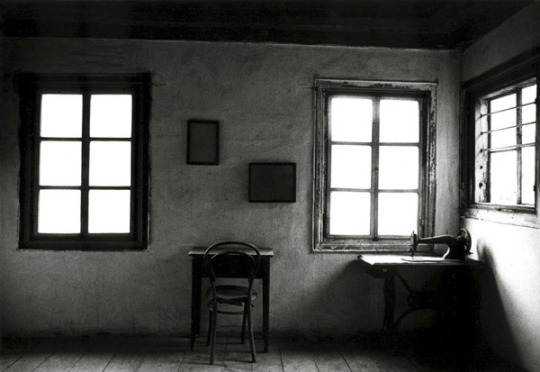

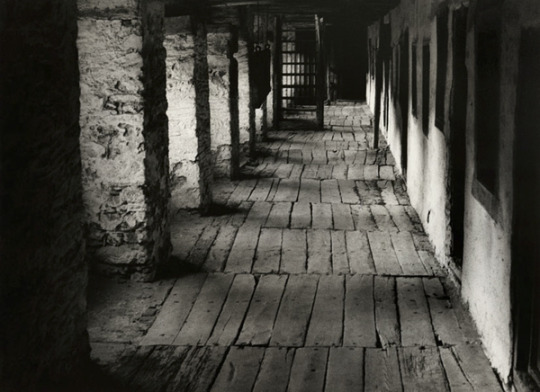


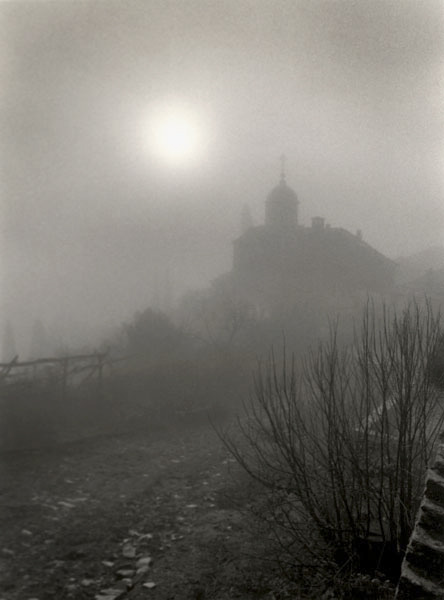
Zbigniew Kosc (Poland, b.1951)
Exit, Simonos Petras Monastery, Athos - 1983
Monastery Simonos Petras, Transit, Athos - 1983
Inside, Athos - 1985
A silent corner, Vatopedi Monastery, Athos - 1986
Empty room with a sewing machine, Monastery Zografu, Athos - 1987
Light, Monastery Vatopedi - 1986
Monastery Chilandari, Athos - 1983
A cross, Karyes - 1985
Chapel in the forest, Athos - 1986
Bogoroditsa, Athos - 1988
The monks' republic on Mount Athos is regarded as the center of Eastern Orthodox spirituality. The first monastery on the holy mountain (Aghio Oros) was established by Constantinople just before the year 1000 with the primary mission to create a center for the Christian faith far removed from the noise and bustle of the world.
Today, 20 monasteries are represented in the Assembly at Karyai, 17 of them being Greek, and one each Bulgarian, Serbian, and Russian.
http://www.zbigniewkosc.nl/ATHOS%20by%20Zbigniew%20Kosc/

Monastery Vatopedi, Athos - 1986
50 notes
·
View notes
Text
Saints&Reading: Sunday, March 31, 2024
march 18_march 31
SAINT GREGORY PALAMAS, ARCHBISHOP OF THESSALONIKA (1359)
(movable holiday on the 2nd Sunday of the Great Lent).

Saint Gregory Palamas, Archbishop of Thessalonica, was born in the year 1296 in Constantinople. Saint Gregory’s father became a prominent dignitary at the court of Andronicus II Paleologos (1282-1328), but he soon died, and Andronicus himself took part in the raising and education of the fatherless boy. Endowed with fine abilities and great diligence, Gregory mastered all the subjects which then comprised the full course of medieval higher education. The emperor hoped that the youth would devote himself to government work. But Gregory, barely twenty years old, withdrew to Mount Athos in the year 1316 (other sources say 1318) and became a novice in the Vatopedi monastery under the guidance of the monastic Elder Saint Νikόdēmos of Vatopedi (July 11). There he was tonsured and began on the path of asceticism. A year later, the holy Evangelist John the Theologian appeared to him in a vision and promised him his spiritual protection. Gregory’s mother and sisters also became monastics.
After the demise of the Elder Νikόdēmos, Saint Gregory spent eight years of spiritual struggle under the guidance of the Elder Nikēphóros, and after the latter’s death, Gregory transferred to the Lavra of Saint Athanasius (July 5). Here he served in the trapeza, and then became a church singer. But after three years, he resettled in the small skete of Glossia, striving for a greater degree of spiritual perfection. The head of this monastery began to teach the young man the method of unceasing prayer and mental activity, which had been cultivated by monastics, beginning with the great desert ascetics of the fourth century: Evagrius Pontikos and Saint Macarius of Egypt (January 19).
Later on, in the eleventh century, Saint Simeon the New Theologian (March 12) had provided detailed instruction in mental activity for those praying in an outward manner, and the ascetics of Athos put it into practice. The experienced use of mental prayer (or prayer of the heart), requiring solitude and quiet, is called “Hesychasm” (from the Greek “hesychia” meaning calm, silence), and those practicing it were called “hesychasts.”
During his stay at Glossia the future hierarch Gregory became fully imbued with the spirit of hesychasm and adopted it as an essential part of his life. In the year 1326, because of the threat of Turkish invasions, he and the brethren retreated to Thessalonica, where he was then ordained to the holy priesthood.
Saint Gregory combined his priestly duties with the life of a hermit. Five days of the week he spent in silence and prayer, and only on Saturday and Sunday did he come out to his people. He celebrated divine services and preached sermons. For those present in church, his teaching often evoked both tenderness and tears. Sometimes he visited theological gatherings of the city’s educated youth, headed by the future patriarch, Isidore. After he returned from a visit to Constantinople, he found a place suitable for solitary life near Thessalonica the region of Bereia. Soon he gathered here a small community of solitary monks and guided it for five years.
In 1331 the saint withdrew to Mount Athos and lived in solitude at the skete of Saint Savva, near the Lavra of Saint Athanasius. In 1333 he was appointed Igumen of the Esphigmenou monastery in the northern part of the Holy Mountain. In 1336 the saint returned to the skete of Saint Savva, where he devoted himself to theological works, continuing with this until the end of his life.
In the 1330s events took place in the life of the Eastern Church which put Saint Gregory among the most significant universal apologists of Orthodoxy, and brought him great renown as a teacher of hesychasm.
About the year 1330 the learned monk Barlaam had arrived in Constantinople from Calabria, in Italy. He was the author of treatises on logic and astronomy, a skilled and sharp-witted orator, and he received a university chair in the capital city and began to expound on the works of Saint Dionysius the Areopagite (October 3), whose “apophatic” (“negative”, in contrast to “kataphatic” or “positive”) theology was acclaimed in equal measure in both the Eastern and the Western Churches. Soon Barlaam journeyed to Mt Athos, where he became acquainted with the spiritual life of the hesychasts. Saying that it was impossible to know the essence of God, he declared mental prayer a heretical error. Journeying from Mount Athos to Thessalonica, and from there to Constantinople, and later again to Thessalonica, Barlaam entered into disputes with the monks and attempted to demonstrate the created, material nature of the light of Tabor (i.e. at the Transfiguration). He ridiculed the teachings of the monks about the methods of prayer and about the uncreated light seen by the hesychasts.
Saint Gregory, at the request of the Athonite monks, replied with verbal admonitions at first. But seeing the futility of such efforts, he put his theological arguments in writing. Thus appeared the “Triads in Defense of the Holy Hesychasts” (1338). Towards the year 1340 the Athonite ascetics, with the assistance of the saint, compiled a general response to the attacks of Barlaam, the so-called “Hagiorite Tome.” At the Constantinople Council of 1341 in the church of Hagia Sophia Saint Gregory Palamas debated with Barlaam, focusing upon the nature of the light of Mount Tabor. On May 27, 1341 the Council accepted the position of Saint Gregory Palamas, that God, unapproachable in His Essence, reveals Himself through His energies, which are directed towards the world and are able to be perceived, like the light of Tabor, but which are neither material nor created. The teachings of Barlaam were condemned as heresy, and he himself was anathemized and fled to Calabria.
But the dispute between the Palamites and the Barlaamites was far from over. To these latter belonged Barlaam’s disciple, the Bulgarian monk Akyndinos, and also Patriarch John XIV Kalekos (1341-1347); the emperor Andronicus III Paleologos (1328-1341) was also inclined toward their opinion. Akyndinos, whose name means “one who inflicts no harm,” actually caused great harm by his heretical teaching. Akyndinos wrote a series of tracts in which he declared Saint Gregory and the Athonite monks guilty of causing church disorders. The saint, in turn, wrote a detailed refutation of Akyndinos’ errors. The patriarch supported Akyndinos and called Saint Gregory the cause of all disorders and disturbances in the Church (1344) and had him locked up in prison for four years. In 1347, when John the XIV was replaced on the patriarchal throne by Isidore (1347-1349), Saint Gregory Palamas was set free and was made Archbishop of Thessalonica.
In 1351 the Council of Blachernae solemnly upheld the Orthodoxy of his teachings. But the people of Thessalonica did not immediately accept Saint Gregory, and he was compelled to live in various places. On one of his travels to Constantinople the Byzantine ship fell into the hands of the Turks. Even in captivity, Saint Gregory preached to Christian prisoners and even to his Moslem captors. The Hagarenes were astonished by the wisdom of his words. Some of the Moslems were unable to endure this, so they beat him and would have killed him if they had not expected to obtain a large ransom for him. A year later, Saint Gregory was ransomed and returned to Thessalonica.
Saint Gregory performed many miracles in the three years before his death, healing those afflicted with illness. On the eve of his repose, Saint John Chrysostom appeared to him in a vision. With the words “To the heights! To the heights!” Saint Gregory Palamas fell asleep in the Lord on November 14, 1359. In 1368 he was canonized at a Constantinople Council under Patriarch Philotheus (1354-1355, 1364-1376), who compiled the Life and Services to the saint.
SAINT CYRIL, ARCHBISHOP OF JERUSALEM (386)
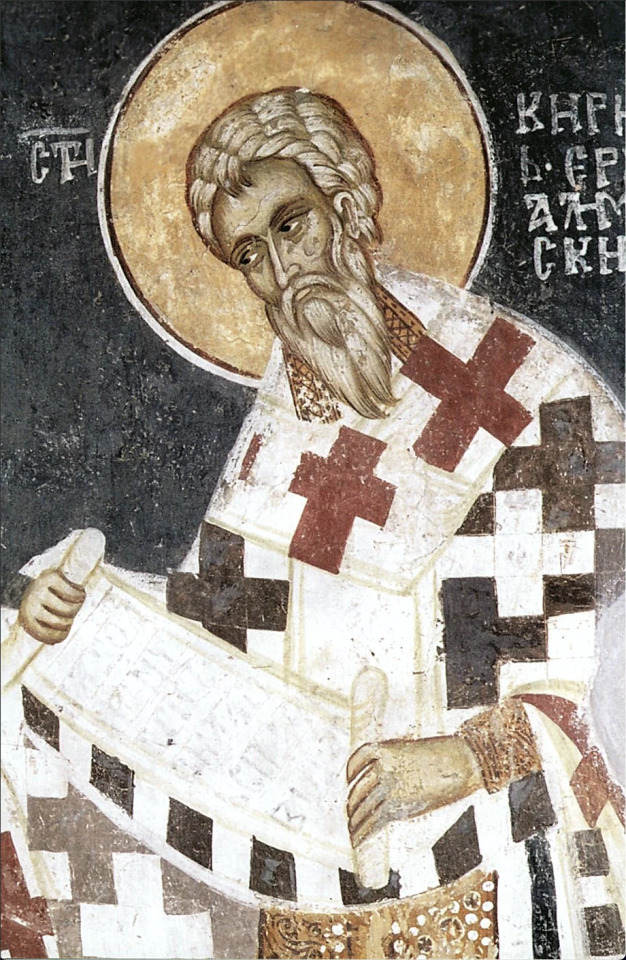
Saint Cyril, Archbishop of Jerusalem, was born in Jerusalem in 315 and raised in strict Christian piety. Upon reaching maturity, he became a monk, and in 346, he became a presbyter. In 350, upon the death of Archbishop Maximus, he succeeded him on the episcopal throne of Jerusalem.
As Patriarch of Jerusalem, Saint Cyril zealously fought against the heresies of Arius and Macedonius. In so doing, he aroused the animosity of the Arian bishops, who sought to have him deposed and banished from Jerusalem.
There was a miraculous portent in 351 at Jerusalem: at the third hour of the day on the Feast of Pentecost, the Holy Cross appeared in the heavens, shining with a radiant light. It stretched from Golgotha above the Mount of Olives. Saint Cyril reported this portent to the Arian emperor Constantius (351-363), hoping to convert him to Orthodoxy.
The heretic Acacius, deposed by the Council of Sardica, was formerly the Metropolitan of Caesarea, and he collaborated with the emperor to have Saint Cyril removed. An intense famine struck Jerusalem, and Saint Cyril expended all his wealth in charity. But since the famine did not abate, the saint pawned church utensils, and used the money to buy wheat for the starving. The saint’s enemies spread a scandalous rumor that they had seen a woman in the city dancing around in clerical garb. Taking advantage of this rumor, the heretics forcibly expelled the saint.
The saint found shelter with Bishop Silvanus in Tarsus. After this, a local Council was held at Seleucia, at which there were about 150 bishops, and among them Saint Cyril. The heretical Metropolitan Acacius did not want to allow him to take a seat, but the Council would not consent to this. Acacius stormed out of the Council, and before the emperor and the Arian patriarch Eudoxius, he denounced both the Council and Saint Cyril. The emperor had the saint imprisoned.
When the emperor Julian the Apostate (361-363) ascended the throne he repealed all the anti-Orthodox decrees of Constantius, seemingly out of piety. Saint Cyril returned to his own flock. But after a certain while, when Julian had become secure upon the throne, he openly apostasized and renounced Christ. He permitted the Jews to start rebuilding the Temple of Jerusalem that had been destroyed by the Romans, and he even provided them part of the funds for the building from the state treasury.
Saint Cyril predicted that the words of the Savior about the destruction of the Temple down to its very stones (Luke. 21:6) would undoubtedly transpire, and the blasphemous intent of Julian would come to naught. Soon there was such a powerful earthquake, that even the solidly set foundation of the ancient Temple of Solomon shifted in its place, and what had been rebuilt fell down and shattered into dust. When the Jews resumed construction, a fire came down from the heavens and destroyed the tools of the workmen. Great terror seized everyone. On the following night, the Sign of the Cross appeared on the clothing of the Jews, which they could not remove by any means.
After this heavenly confirmation of Saint Cyril’s prediction, they banished him again, and the bishop’s throne was occupied by Saint Cyriacus. But Saint Cyriacus soon suffered a martyr’s death (October 28).
After the emperor Julian perished in 363, Saint Cyril returned to his See, but during the reign of the emperor Valens (364-378) he was exiled for a third time. It was only under the holy emperor Saint Theodosius the Great (379-395) that he finally returned to his archpastoral activity. In 381 Saint Cyril participated in the Second Ecumenical Council, which condemned the heresy of Macedonius and affirmed the Nicea-Constantinople Symbol of Faith (Creed).
Saint Cyril’s works include twenty-three Instructions (Eighteen are Catechetical, intended for those preparing for Baptism, and five are for the newly-baptized) and two discourses on Gospel themes: “On the Paralytic,” and “Concerning the Transformation of Water into Wine at Cana.”
At the heart of the Catechetical Instructions is a detailed explanation of the Symbol of Faith. The saint suggests that a Christian should inscribe the Symbol of Faith upon “the tablets of the heart.”
“The articles of the Faith,” Saint Cyril teaches, “were not written through human cleverness, but they contain everything that is most important in all the Scriptures, in a single teaching of faith. Just as the mustard seed contains all its plethora of branches within its small kernel, so also does the Faith in its several declarations combine all the pious teachings of the Old and the New Testaments.”
Saint Cyril, a great ascetic and a champion of Orthodoxy, died in the year 386.


HEBREWS 1:10-2:3
10 And:"You, LORD, in the beginning laid the foundation of the earth, And the heavens are the work of Your hands. 11 They will perish, but You remain; And they will all grow old like a garment; 12 Like a cloak You will fold them up, And they will be changed. But You are the same, And Your years will not fail." 13 But to which of the angels has He ever said:"Sit at My right hand, Till I make Your enemies Your footstool"? 14 Are they not all ministering spirits sent forth to minister for those who will inherit salvation?
1 Therefore we must give the more earnest heed to the things we have heard, lest we drift away. 2 For if the word spoken through angels proved steadfast, and every transgression and disobedience received a just reward, 3
how shall we escape if we neglect so great a salvation, which at the first began to be spoken by the Lord, and was confirmed to us by those who heard Him,
JOHN 21:1-14
1 After these things Jesus showed Himself again to the disciples at the Sea of Tiberias, and in this way He showed Himself: 2 Simon Peter, Thomas called the Twin, Nathanael of Cana in Galilee, the sons of Zebedee, and two others of His disciples were together. 3 Simon Peter said to them, "I am going fishing." They said to him, "We are going with you also." They went out and immediately got into the boat, and that night they caught nothing. 4 But when the morning had now come, Jesus stood on the shore; yet the disciples did not know that it was Jesus. 5 Then Jesus said to them, "Children, have you any food?" They answered Him, "No." 6 And He said to them, "Cast the net on the right side of the boat, and you will find some." So they cast, and now they were not able to draw it in because of the multitude of fish. 7 Therefore that disciple whom Jesus loved said to Peter, "It is the Lord!" Now when Simon Peter heard that it was the Lord, he put on his outer garment (for he had removed it), and plunged into the sea. 8 But the other disciples came in the little boat (for they were not far from land, but about two hundred cubits), dragging the net with fish. 9 Then, as soon as they had come to land, they saw a fire of coals there, and fish laid on it, and bread. 10 Jesus said to them, "Bring some of the fish which you have just caught." 11 Simon Peter went up and dragged the net to land, full of large fish, one hundred and fifty-three; and although there were so many, the net was not broken. 12 Jesus said to them, "Come and eat breakfast." Yet none of the disciples dared ask Him, "Who are You?"-knowing that it was the Lord. 13 Jesus then came and took the bread and gave it to them, and likewise the fish. 14 This is now the third time Jesus showed Himself to His disciples after He was raised from the dead.
#orthodoxy#orthodoxchristianity#easternorthodoxchurch#originofchristianity#spirituality#holyscriptures#gospel#bible#wisdom#saints
2 notes
·
View notes
Photo
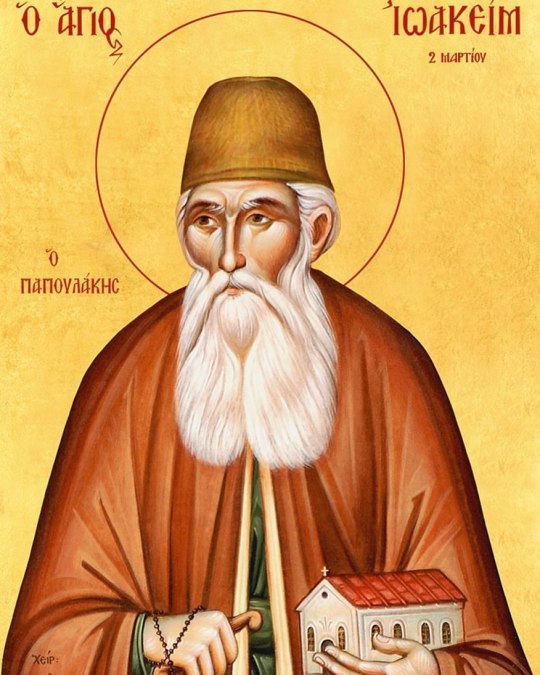
Today we also celebrate our Venerable Father Joachim “Papoulakos” of Vatopedi. Saint Joachim was born in 1786 as Ioannis Patrikios to the devout parents, Angelos and Agne Patrikios, in the little village of Kalyvia of Ithaca in Greece. At a very early age, his mother passed away and his father remarried. His stepmother would be moved in jealousy towards the young child and it was well known that she mistreated him. This forced him at an early age to learn patience and he learnt to spend many hours hiding from her; reading the Holy Scriptures and praying at a small church near his home dedicated to St. Spyridon. He joined the family business and worked for his father as a sailor. One one of his trips, he visited Mount Athos, where he became a monk and stayed at the Monastery of Vatopaedi taking on the name of "Joachim". In 1827, the saint returned to Ithaca and served the church there for the remainder of his life. He peacefully fell asleep in the Lord in Vathy of Ithaca on March 2, 1868. May he intercede for us always + Source: https://orthodoxwiki.org/Joachim_of_Vatopaidi (at Ithaca, Greece) https://www.instagram.com/p/CpR1eLwjtOo/?igshid=NGJjMDIxMWI=
10 notes
·
View notes
Text
The bookbinder of Vatopedi Monastery
Vatopedi Monastery, founded in the late 10th century, is the second oldest monastery on Mt Athos but the Holy Mountain’s biggest and richest. I spent a week here in September 2022 as part of a team organised by the Friends of Mt Athos clearing the ancient footpaths between the monasteries which tend to get quickly overgrown. It was a unique opportunity to take part in the life oif a monastic…

View On WordPress
0 notes
Photo

#february #greece🇬🇷 #travelinspiration #flowerphoto #tree🌳 #pink#travelingram #monastery #travelpic #vatopedu#vatopedi #vatopedimonastery (la Holy Great Monastery Vatopedi - Ιερά Μεγίστη Μονή Βατοπαιδίου) https://www.instagram.com/p/ColXe7pIIMA/?igshid=NGJjMDIxMWI=
#february#greece🇬🇷#travelinspiration#flowerphoto#tree🌳#pink#travelingram#monastery#travelpic#vatopedu#vatopedi#vatopedimonastery
0 notes
Text

WHEN TO LEAVE A JOB
“I ask for your advice, Vladyka. If at work you are constantly faced with the disbelief of other people, with temptations, with assignments that contradict faith, isn’t it better to change your job? Thanks to.
– It is not easy to leave the place where we work, serve and live. Once a man from Halkidiki came to the Holy Mountain, who worked at a large metallurgical enterprise, where strontium was mined (this is a metal that is very deep in the earth). He worked in a deep mine with other people for many hours, but these people were blasphemers and blasphemed the Mother of God. He came to Athos and asked the elder for blessing to change jobs, because he could not hear how they blasphemed the Mother of God. The elder told him: “It is very difficult to change jobs. You do have a family. Wherever you go, won't there be temptations?" And thus gave him no blessing. He was very upset and during the service he went to the miraculous icon of the Virgin Vimatarissa (Altar), which is located in the Vatopedi monastery, knelt down and prayed with tears. He wept, prayed and said to the Theotokos: “Most Holy Theotokos, I cannot hear how they blaspheme You.” And he heard the voice of the Mother of God, Who said to him: “For two thousand years I have heard how they blaspheme Me, and I endure. Can't you wait a few years? Go, pray, and I will be with you." It is not easy to leave our seats. The word "patience", in Greek ὑπομονή, comes from the verb ὑπομένω, which means to remain in a certain place regardless of difficult circumstances, to remain in one's place no matter what.
WHEN WORK TAKES ALL THE TIME
- Bless! If I have to support my family and work takes all my strength, then how can I have time not only to pray, but also to read spiritual books, the Gospel? Does this mean that spiritual life is not yet possible for me?
– As we have said before, the spiritual life is not a bodily method. Spiritual life means that the Holy Spirit must live in your heart. And the one who sacrifices himself, works and tries every day and every minute for his family, for his neighbors, he is a martyr of love. And he can even use the few minutes that he has at his disposal to cry out to Christ, and Christ is a just and good Father. And He sees the struggle and work of each person. Spiritual life does not only mean that I read and pray, spiritual life means that I imitate Christ in all the little things of my life.
Metropolitan Athanasios of Limassol
17 notes
·
View notes
Text
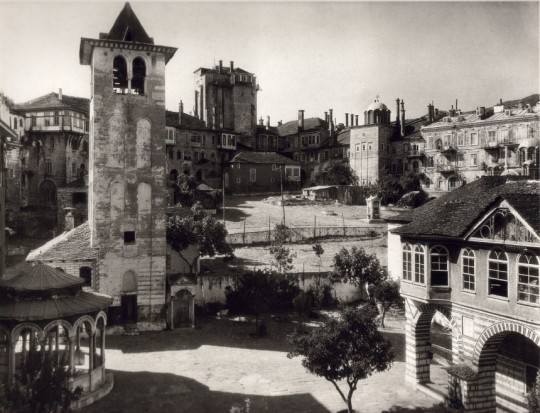
Vatopedi, Greece, 1929
The Holy and Great Monastery of Vatopedi (Greek: Βατοπέδι, pronounced) is an Eastern Orthodox monastery on Mount Athos, Greece. Vatopedi was founded in the second half of the 10th century. More than 120 monks live in the monastery today.
14 notes
·
View notes
Text

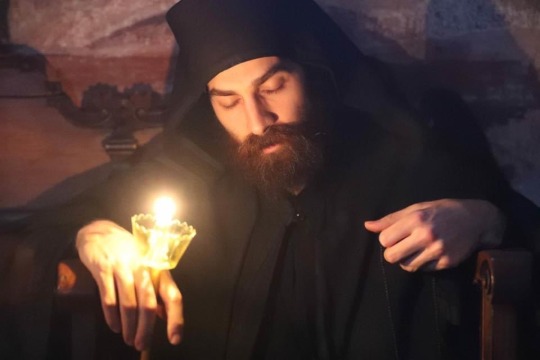
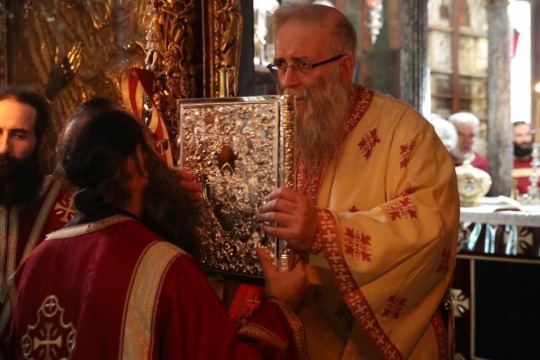

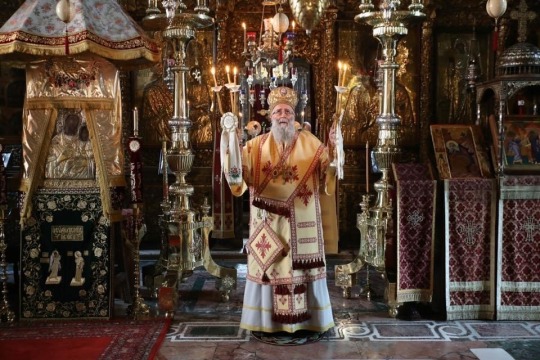
Shadow of the holiness:
Divine Liturgy on Mt. Athos' Monastery Vatopedi.
12 notes
·
View notes
Text
Mount Athos, a Male-Only Holy Retreat, Is Ruffled by Tourists and Russia
By Neil MacFarquhar, NY Times, Oct. 20, 2018
MOUNT ATHOS, Greece--The skulls, lined up five deep on wooden shelves, date back hundreds of years, with the names of the more recently deceased scratched onto their foreheads--Monk Theolothelis, 91, 26-6-1986, or Monk Kyprianos, 100, 14-8-87.
They are exhibited in Xenophontos Monastery here on Mount Athos, a peninsula in northern Greece that is the spiritual heart of the Eastern Orthodox Church. One skull carries a more philosophical message: “Brother, Look at the glory of man.”
That invitation to reflect on mortality encapsulates why the dead are exhumed and their bones displayed, explained Father Jerome, 50, who has an untamed salt-and-pepper beard and wore washed-out gray robes.
“Today you are here, the next day you are not,” he said. “If you remember death every day, it keeps you from doing evil.”
While the skull display underscores human transience, the 20 monasteries and a host of smaller dwellings on Mount Athos seem eternal. Monks have been chanting psalms here daily for centuries.
“It is an ancient community, organized just like now for more than 1,000 years,” said Abbott Alexios, 79, who found Xenophontos collapsing when he arrived in 1976, and has since led its rebuilding. “The church has its traditions, but Mount Athos is transcendent.”
The peninsula could almost be another Greek tourist resort with its peridot shallows, pine-covered hills and the 6,670-foot Athos peak dominating one end of its nearly 130 square miles.
But the Autonomous Monastic State of the Holy Mountain is a place apart.
For almost as long as there have been monks here, women have been barred--considered a distraction and undue competition for the Virgin Mary, the patron saint. There are no hotels, no bars, no stores, no television and no swimming, plus a daily quota limits visitors.
Travelers arrive on boats providing the only public access to the peninsula. Collectively, the monasteries play host to an average of 1,200 people nightly, all without charge.
The difficult access and the high monastery walls once built against marauding pirates seemed to keep time at bay, too, but now the modern world penetrates on cellphone signals and internet connections.
Geopolitics has sneaked in, too. Greece last summer denied visas to several high-ranking Russian Orthodox Church officials headed to Athos, in which President Vladimir V. Putin has shown a keen interest.
Greek officials fear any revival of the pre-revolutionary effort by Czarist Russia to dominate the peninsula.
Athos holds a special place in the Greek psyche, as a throwback to when the might of the Byzantine Empire meant Greek culture dominated the eastern Mediterranean.
There have been monks here since the sixth century or so, and Mount Athos is a kind of storehouse of Byzantium civilization, with monasteries sticking to the Julian calendar, 13 days behind the more common Gregorian calendar.
“We preserve the Byzantine Empire because it is a treasure of Orthodoxy, not because this is the relic of a secular state,” said Father Jeremiah, 48, a Protestant convert from San Angelo, Tex., who came to Xenophontos on a pilgrimage 22 years ago and has lived there ever since. “This is not a museum, but a living place.”
Ancient texts dictate the rhythm of daily life for the approximately 2,000 monks on Athos, defining everything from the liturgy to the diet.
The monks, mostly Greek, spend about six hours in church daily. They rise six hours after sunset for morning prayers, summoned by a monk banging a semantron--a wood hammer on wood board--echoing the way Noah was said to have beckoned all living creatures into the ark.
Prayer is deemed particularly effective during darkness.
“Evil spirits roam during the night, so somebody needs to stay awake to keep watch,” said Father Damaskinos, 33, who, unusually for Athos, returns to his native Finland regularly to work as a theology professor.
There are just two daily meals. One menu consisted of lentil purée, tomatoes, olives, fruit and water or red wine, at 9:30 a.m.
“We eat fast,” Father Jeremiah warned. A typical meal lasts 15 minutes. One monk reads prayers and any visitor who tries to talk is shushed.
After the morning meal, the monks work--gardening, cooking, painting icons--until it is time for vespers before sunset, the evening meal and bed. Even while working, most pray, their lips constantly moving with the refrain, “Lord Jesus Christ, have mercy on me.”
Monks often summarize their existence in pithy shorthand. “He is happy because he has nothing, but he has everything,” Abbot Alexios said of a monk’s life.
Yet Mammon and the material world seem to have intruded.
Monasteries sell their own line of products including wine, olive oil, herbal teas and even body creams. The gift shop at Vatopedi Monastery sells icons for more than $17,000.
Expensive SUVs now whisk affluent visitors along dirt roads once limited to donkeys and trekking pilgrims. Xenophontos extols its woodworking shop, but laborers imported from Albania and Egypt do the hard work.
Construction cranes hover over many monasteries; all but a few have been extensively rebuilt using European Union funds for historic preservation.
Senior government and church officials have said Russia planned to spend $30 million to restore the imposing Russian monastery, St. Panteleimon. Both public and private spending across Athos since 2005 might have reached $200 million, according to a BBC report seconded by several donors and experts.
Czarist Russia made a play to control Athos around 1913, flooding it with several thousand monks and insisting that it become independent. Athos ended up as an autonomous part of Greece.
Russian interest waned after the 1917 Revolution, but recent influence peddling has Athens worried about a renewed effort at domination.
Hard-line newspapers distributed free at Vatopedi, for example, shower praise on Russian Orthodoxy while pillorying Patriarch Bartholomew I of Constantinople, who controls Athos, as an enemy agent. The patriarch, considered the “first among equals” in church affairs, is engaged in a fight with Moscow over creating an independent church in Ukraine.
Last Monday, the Russian Orthodox Church banned its adherents from communion at churches under Bartholomew’s supervision, including all on Athos, but it is unclear how that will affect the tide of pilgrims or donations.
1 note
·
View note
Text
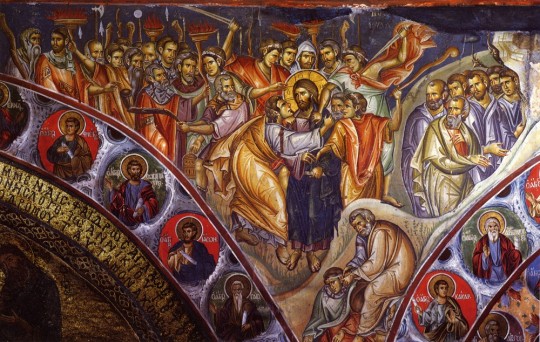
Holy and Great Friday. Judas's kiss. Early 14th c. Vatopedi Monastery, Mt. Athos.
16 notes
·
View notes
Text
13th September >> Daily Reflection/Commentary on Today’s Saint of the Day for Roman Catholics: Saint John Chrysostom
John Chrysostom was born in 347, the son of an army officer at Antioch in Syria. His father died soon after his birth and he was brought up by his widowed mother. She saw that he was well educated in oratory and law. (‘Chrysostom’, a later acquired name, means ‘golden-mouthed’.) From about 373 he became a monk in a mountain community not far from the city and, like many other holy men, damaged his health through excessive austerities as well as the uncongenial surroundings of his cave hermitage. He spent long periods standing, did not have sufficient sleep while spending his time learning the Bible by heart. As a result, his stomach and kidneys were permanently damaged and poor health forced him to leave his hermitage and return to Antioch.
He also began to make his name as a preacher and commentator on the letters of Paul and the gospels of Matthew and John. Against the Antiochene tradition, he emphasised the direct rather than the allegorical meaning of Scripture and how it could be applied to the problems of the age. In this sense, much of his writing is still relevant to our own day.
He gained political fame through his 21 sermons on “The Statues” in 387. These statues, representing the Emperor Theodosius, his father, dead wife and sons, had been smashed in a riot against the emperor’s taxation policy. Although reprisals were expected, an amnesty was won by the elderly bishop Flavian. Chrysostom’s sermons also helped bring peace and understanding to the issue.
Following the death in 397 of the Archbishop of Constantinople, the Emperor Arcadius wanted John Chrysostom to take his place. Fearing opposition from the people, an envoy was sent to take him secretly from Antioch. Theophilus, the Patriarch of Alexandria and uncle of the future Cyril of Alexandria, performed the consecration in 398, although he had coveted the post for himself.
John began immediately to reform the moral corruption of the imperial court, the clergy and the people. He reduced the expenditure on his own household and spent the money on the poor and on hospitals. He imposed strict discipline on the clergy which some regarded as too severe.
He also attacked the behaviour, dress and bodily decoration of the women at court and condemned Christians who went to the races on Good Friday and to games in the stadium on Holy Saturday. The Empress Eudoxia, probably with some justification, regarded many of these reforms as personally directed against her. It did not help when a statue of her was set up outside the cathedral of Santa Sophia. Its dedication was honoured by public games, an occasion for superstitious and immoral behaviour.John began immediately to reform the moral corruption of the imperial court, the clergy and the people. He reduced the expenditure on his own household and spent the money on the poor and on hospitals. He imposed strict discipline on the clergy which some regarded as too severe.
He also attacked the behaviour, dress and bodily decoration of the women at court and condemned Christians who went to the races on Good Friday and to games in the stadium on Holy Saturday. The Empress Eudoxia, probably with some justification, regarded many of these reforms as personally directed against her. It did not help when a statue of her was set up outside the cathedral of Santa Sophia. Its dedication was honoured by public games, an occasion for superstitious and immoral behaviour.
Theophilus, who had wanted the see of Constantinople for himself, now began supporting the empress. He brought together a number of bishops who gathered in Chalcedon. They condemned John in his absence with false or distorted charges. They also accused him of treason for calling the empress ‘Jezebel’. They called for his banishment and he was sent into exile. However, an earthquake in Constantinople frightened the superstitious empress and John was brought back to the city.
Undaunted, Chrysostom continued his verbal attacks which made the empress angry again. Theophilus once more turned against him by appealing to an Arian council in Antioch. Once again Chrysostom was banished. The accusation was that he had assumed authority in a diocese from which he had been “lawfully deposed”.
Although his people were behind him and he had the support of the pope and many western bishops, he was exiled once again in 404. He first went to Armenia and then to Pontus.
John died on 14 September 407 in the city of Comana on his way to his place of exile. He died as the result of the hardships of enforced travel on foot and in exhausting circumstances. There his relics remained until 438 when, thirty years after his death, they were transferred to the Church of the Apostles in Constantinople during the reign of the Empress Eudoxia’s son, the Emperor Theodosius II (408-450), under the guidance of John’s disciple, St. Proclus, who by that time had become Archbishop of Constantinople (434-447).
His relics were looted from Constantinople by the Crusaders in 1204 and brought to Rome, but were returned to the Orthodox Church on 27 November 2004 by Pope John Paul II. His silver and jewel-encrusted skull is now kept in the Vatopedi Monastery on Mount Athos in northern Greece, and is credited by Eastern Orthodox Christians with miraclulous healings. His right hand is also preserved on Mount Athos, and numerous smaller relics are scattered throughout the world.
In the Western Church he is invoked as one of the Four Greek Doctors (with Athanasius, Basil, and Gregory of Nazianzus) and in the East as one of the Three Holy Hierarchs and Universal Teachers.
His scripture commentaries and a treatise on the priesthood are his best known writings.
Some of his more trenchant sayings:
“It is not possible for one to be wealthy and just at the same time.”
“Do you pay such honour to your excrements as to receive them into a silver chamber-pot when another man made in the image of God is perishing in the cold?”
“Do you wish to honour the body of Christ? Do not ignore him when he is naked. Do not pay him homage in the temple clad in silk, only then to neglect him outside where he is cold and ill-clad. He who said: ‘This is my body’ is the same who said: ‘You saw me hungry and you gave me no food’, and ‘Whatever you did to the least of my brothers you did also to me’… What good is it if the Eucharistic table is overloaded with golden chalices when your brother is dying of hunger? Start by satisfying his hunger and then with what is left you may adorn the altar as well
2 notes
·
View notes
Text
Saints&Reading: Thursday, August 24, 2023
august 11_august 24
VENERABLE THEODOSIUS, (FEDOR) PRINCE OF OSTROZH (1483)

Saint Theodore, Prince of Ostrog, gained fame with the construction of churches and by his defense of Orthodoxy in Volhynia against the enroachment of Papism. He was descended from Saint Vladimir (July 15), through a great-grandson Svyatopolk-Michael, prince of Turov (1080-1093) and later Great Prince of Kiev (+1113).
The first time the name of the holy Prince Theodore is mentioned is in the year 1386, when the Polish king Jagiello and the Lithuanian prince Vitovt affirmed his hereditary possession of the Ostrog district, and they augmented the Zaslavsk and Koretsk surroundings.
In 1410 Saint Theodore participated in the defeat of the Teutonic Knights of the Catholic Order at the Battle of Gruenwald. In 1422 the holy prince, because of sympathy for the Orthodox in Bohemia, supported the Hussites in their struggle with the German emperor Sigismund. Theodore introduced the Hussite formation (i.e., the Taborite, adopted by the Ukrainian Cossacks) into Russian military strategy.
In 1432, after winning a series of victories over the Polish forces, Saint Theodore compelled Prince Jagiello to guarantee the freedom of Orthodoxy in Volhynia under the law. Prince Svidrigailo, apprehensive of the strengthening of his ally, locked Saint Theodore into prison, but the people who loved the saint rose up in rebellion, and he was freed.
Saint Theodore was reconciled with the offender and went to him for help in the struggle against the Lithuanians and the Poles. In 1438, the holy prince took part in a battle with the Tatars. In 1440, with the accession to the Polish throne of Cazimir, youngest son of Prince Jagiello, Saint Theodore received the rights of administration of the city of Vladimir, Dubno, Ostrog, and he was granted extensive holdings in the best regions of Podolia and Volhynia.
Saint Theodore left all this behind, together with princely power and fame. After 1441 he entered the Kiev Caves monastery, where he received the monastic tonsure with the name Theodosius, he struggled there for the salvation of his soul until the time of his blessed repose.
The year of Saint Theodore’s death is unknown, but it is probable that he died in the second half of the fifteenth century at a great old age (S. M. Soloviev in his History of Russia gives the year of his death as 1483). The saint was buried in the Far Caves of Saint Theodosius. His glorification apparently took place at the end of the sixteenth century, since in the year 1638 the hieromonk Athanasius Kal’nophysky testified that “Saint Theodore rests in the Theodosiev Cave, where his body was discovered incorrupt.”
Saint Theodore is also commemorated on the Synaxis of the Monastic Fathers of the Far Caves on August 28.
SAINT NYPHONTES, PATRIARCH OF CONSTANTINOPLE (1483)

Saint Nḗphon II, the Patriarch of Constantinople, was from the Peloponnesos. His parents were named Manuel and Maria, and he was named Nicholas in Holy Baptism. Later, he was tonsured as a monk at Epidauros, receiving the new name Nḗphon.
After the death of his Elder Anthony, he went to Mount Athos, where he occupied himself by copying books. Afterward, he was chosen as Metropolitan of Thessaloniki. In 1486 he occupied the Patriarchal throne of Constantinople.
Banished in 1488, the Saint went to the Holy Mountain, at first to Vatopedi Monastery, and then to the monastery of Saint John the Forerunner (Dionysiou). He concealed his rank and occupied the lowliest position. By God’s providence, his rank was revealed to the brethren of the monastery. Once, when the Saint was returning from the forest where he had gone for firewood, all the brethren went out to meet him, greeting him as Patriarch. But even after this, the Saint continued to share various tasks with the brethren.
In all, he served three times as Patriarch of Constantinople: 1486-1488; 1497-1498; and 1502.
Saint Nḗphon reposed on September 3, 1508 at the age of 90. Immediately after his death, he was honored as a Saint in many places. On August 16, 1517, in the newly-established monastery of Curtea de Argeş, Patriarch Theoleptos of Constantinople, together with the Synod of the Romanian Lands, and the Igoumens of the Athonite monasteries, performed the solemn glorification of Saint Nḗphon, decreeing that his Feast Day be celebrated on August 11th.
His relics are kept in a shrine at the Monastery of Dionysiou, where there is also a chapel dedicated to him. In gratitude, the Athonite monks gave the Saint's head and hand to Nyagoe Basarab, who placed them in the Monastery he built at Curtea de Argeş in what is now Romania. In the XVIII century, these relics were placed in a silver reliquary.
At the behest of the Holy Synod of the Romanian Orthodox Church, they were brought to Craiova, to the church of Saint Dēmḗtrios, the Metropolitan cathedral of Oltenia on October 25, 1949.
In 2009, the relics of Saint Nḗphon were moved to the Cathedral of the Ascension of the Lord at Târgovişte.
Source: All texts Orthodox Church in America_ OCA
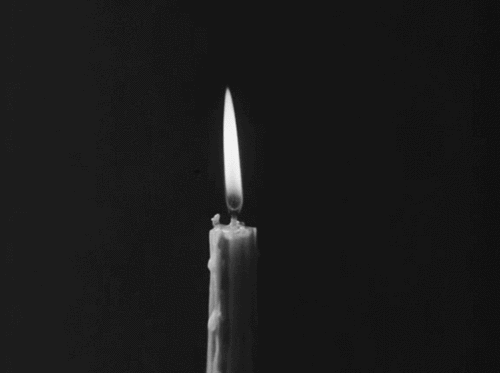
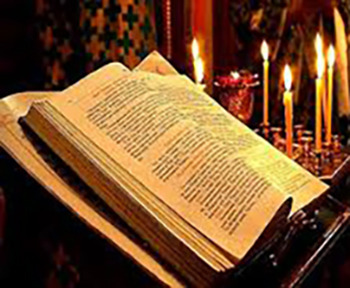
2 CORINTHIANS 7:1-10
1 Therefore, having these promises, beloved, let us cleanse ourselves from all filthiness of the flesh and spirit, perfecting holiness in the fear of God. 2 Open your hearts to us. We have wronged no one, we have corrupted no one, we have cheated no one. 3 do not say this to condemn; for I have said before that you are in our hearts, to die together and to live together. 4 Great is my boldness of speech toward you, great is my boasting on your behalf. I am filled with comfort. I am exceedingly joyful in all our tribulation. 5 For indeed, when we came to Macedonia, our bodies had no rest, but we were troubled on every side. Outside were conflicts, inside were fears. 6 Nevertheless God, who comforts the downcast, comforted us by the coming of Titus, 7 and not only by his coming, but also by the consolation with which he was comforted in you, when he told us of your earnest desire, your mourning, your zeal for me, so that I rejoiced even more. 8 For even if I made you sorry with my letter, I do not regret it; though I did regret it. For I perceive that the same epistle made you sorry, though only for a while 9 Now I rejoice, not that you were made sorry, but that your sorrow led to repentance. For you were made sorry in a godly manner, that you might suffer loss from us in nothing. 10 For godly sorrow produces repentance leading to salvation, not to be regretted; but the sorrow of the world produces death.
MARK 1:29-35
29 Now as soon as they had come out of the synagogue, they entered the house of Simon and Andrew, with James and John. 30 But Simon's wife's mother lay sick with a fever, and they told Him about her at once. 31 So He came and took her by the hand and lifted her up, and immediately the fever left her. And she served them. 32 At evening, when the sun had set, they brought to Him all who were sick and those who were demon-possessed. 33 And the whole city was gathered together at the door. 34 Then He healed many who were sick with various diseases, and cast out many demons; and He did not allow the demons to speak, because they knew Him. 35 Now in the morning, having risen a long while before daylight, He went out and departed to a solitary place; and there He prayed.
#orthodoxy#orthodoxchristianity#easternorthodoxchurch#originofchristianity#spirituality#holyscriptures#gospel#bible#wisdom#saints
6 notes
·
View notes
Photo

Today we also celebrate the Holy Hierarch Sava, Enlightener of Serbia. Saint Sava, the first Archbishop and teacher of the Serbs, and the most beloved of all the Saints of Serbia, was born in 1169, and was named Rastko by his parents. He was the son of Stephen Nemanja, the ruler of Serbia, who is better known as Saint Symeon the Myrrh-streamer. As a young man, Rastko fled secretly to the Holy Mountain, Athos, to the Monastery of Saint Panteleimon. When his father learned of his flight, he sent soldiers after him. Before they could seize him, he was tonsured a monk with the name of Sabbas, after Saint Sabbas the Sanctified (celebrated Dec. 5). Soon after, he entered the Monastery of Vatopedi, where his father joined him in 1197. Together they rebuilt the Monastery of Hilandar and made it a great spiritual center for their countrymen. In 1200 Saint Symeon reposed, and his body became a source of holy myrrh; in 1204 Saint Sabbas was compelled to return to Serbia with his father's relics, that he might restore peace between his two brothers, who were struggling over the rule of the kingdom. The grace of Saint Symeon's relics, and the mediations of Saint Sabbas, healed the division between his brethren. After persuading the Emperor in Constantinople and the Ecumenical Patriarch to grant autocephaly to the Serbian Church, the Saint against his will was ordained first Archbishop of his native land in 1219, where he labored diligently to establish the Orthodox Faith. In 1221 he crowned his brother Stephen first King of Serbia (the memory of Saint Stephen, First Crowned King of Serbia, is kept on September 24). In 1234, foreseeing by divine grace his coming departure to the Lord, he resigned the archiepiscopal throne, named his disciple Arsenius as his successor, and made a pilgrimage to Jerusalem and Mount Sinai; while returning through Bulgaria, he fell asleep in peace in 1236. Because he has been ever since the national hero of Serbia and an invincible bulwark strengthening the Orthodox Faith, the Moslem Turks burned his incorrupt relics in the year 1594. May he intercede for us always + Source: https://www.goarch.org/chapel/saints?contentid=1933 (at Veliko Tarnovo, Bulgaria) https://www.instagram.com/p/CnXzfh9hMeV/?igshid=NGJjMDIxMWI=
13 notes
·
View notes